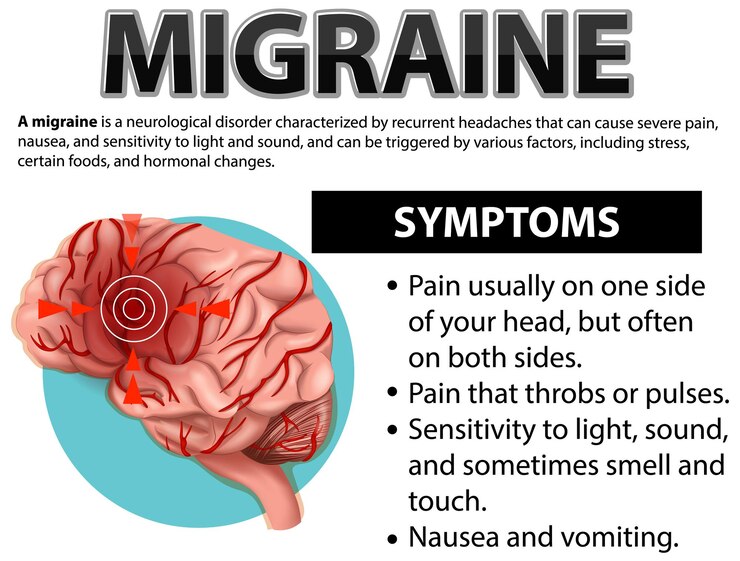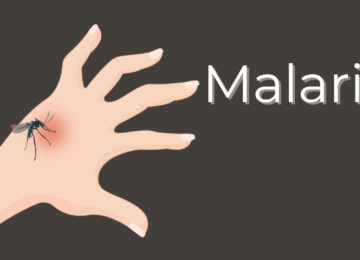Migraines are not just headaches; they are debilitating episodes of pain and discomfort that can significantly impact a person’s quality of life. In this article, we will delve into the complexities of migraines, understanding their various types, causes, symptoms, diagnosis, and treatment options.

What is a Migraine?
A migraine is a neurological condition characterized by intense throbbing pain, often on one side of the head. It often presents alongside additional symptoms like queasiness, vomiting, and heightened sensitivity to both light and sound.

Types of Migraines
Migraine without Aura
Migraine without aura is the most common type, where individuals experience moderate to severe headache pain without any warning signs.
Migraine with Aura
Migraine with aura involves neurological symptoms, such as visual disturbances or tingling sensations, occurring before or during the headache phase.

Causes and Triggers
Migraines may arise due to a variety of factors, such as shifts in hormones, specific dietary choices, stress, insufficient sleep, and environmental influences. Understanding these triggers is essential for managing migraines effectively.
Symptoms of Migraine
Aura Symptoms
Aura symptoms can vary from visual disturbances, like seeing flashing lights, to sensory changes, such as tingling in the hands and face.
Attack Symptoms
During a migraine attack, individuals may experience severe head pain, nausea, vomiting, and sensitivity to light and sound.

Diagnosis and Treatment
Diagnosing Migraines
Diagnosing migraines involves a thorough medical history, physical examination, and sometimes, imaging tests to rule out other underlying conditions.
Treatment Options
Treatment options range from over-the-counter pain relievers to prescription medications specifically designed to alleviate migraine symptoms.

Preventive Measures
Lifestyle Changes
Adopting a healthy lifestyle, including regular exercise, proper sleep, and stress management, can significantly reduce the frequency and intensity of migraines.
Medications for Prevention
Certain medications, when taken regularly under a doctor’s supervision, can prevent the onset of migraines and decrease their severity.

Managing Migraines Naturally
Dietary Adjustments
Identifying and avoiding trigger foods, such as caffeine, chocolate, and aged cheeses, can help in managing migraines naturally.
Stress Management
Practicing relaxation techniques, such as yoga and meditation, can reduce stress, a common trigger for migraines.

Impact of Migraine on Daily Life
Migraines can interfere with daily activities, leading to missed work or school days. Understanding the impact is crucial for individuals and their families.
Migraine in Children and Adolescents
Migraines are not limited to adults; children and adolescents can also experience migraines, which might be mistaken for other conditions if not properly diagnosed.
Migraine and Mental Health
The persistent character of migraines can result in feelings of anxiety and depression. Addressing mental health is integral to comprehensive migraine management.
Migraine and Hormones
Hormonal fluctuations, especially in women, can trigger migraines. Understanding these connections is essential for tailored treatment approaches.
When to Seek Medical Help
Individuals experiencing severe or persistent migraines, especially those accompanied by neurological symptoms, should seek immediate medical attention.
Conclusion
In conclusion, migraines are intricate neurological conditions that require comprehensive management strategies. By understanding the types, triggers, symptoms, and treatment options, individuals can effectively navigate their migraine journey, leading to a better quality of life.

FAQs
Migraines are neurological conditions characterized by intense throbbing pain and are often accompanied by other symptoms like nausea and sensitivity to light and sound, whereas regular headaches are generally milder and lack these accompanying symptoms.
While there is no definitive cure for migraines, they can be effectively managed with lifestyle changes, medications, and preventive measures, allowing individuals to lead relatively normal lives.
Yes, migraines can run in families, suggesting a genetic predisposition to the condition. If one or both parents have migraines, there is an increased likelihood that their children might also experience migraines.
Yes, stress is a common trigger for migraines. Managing stress through relaxation techniques and mindfulness can help reduce the frequency and intensity of migraines.
It is not advisable to drive during a migraine aura, as visual disturbances and other neurological symptoms can impair your ability to drive safely. It is crucial to wait until the aura subsides before operating a vehicle.







